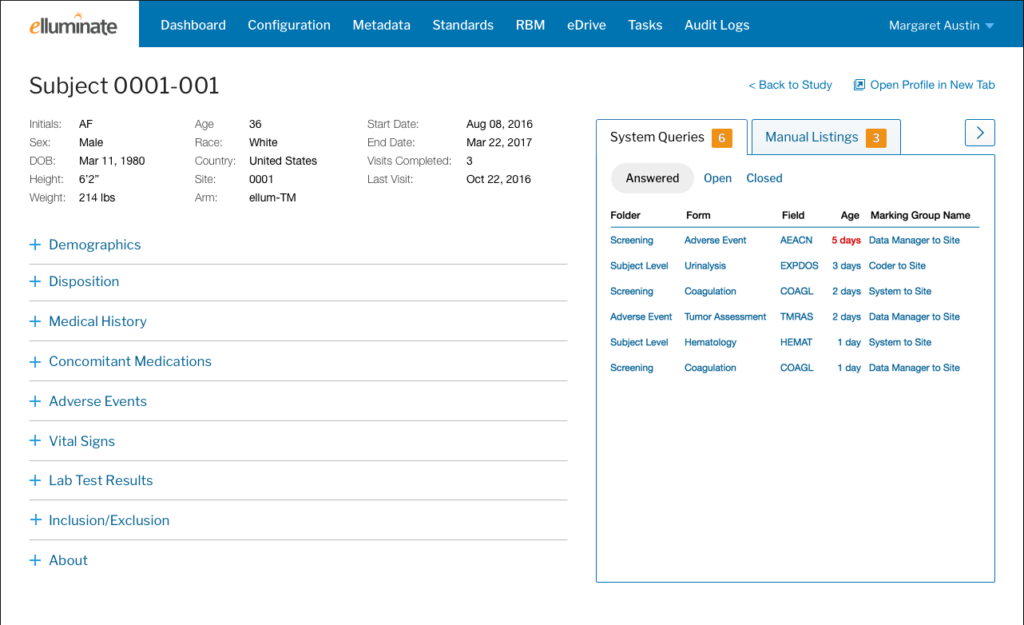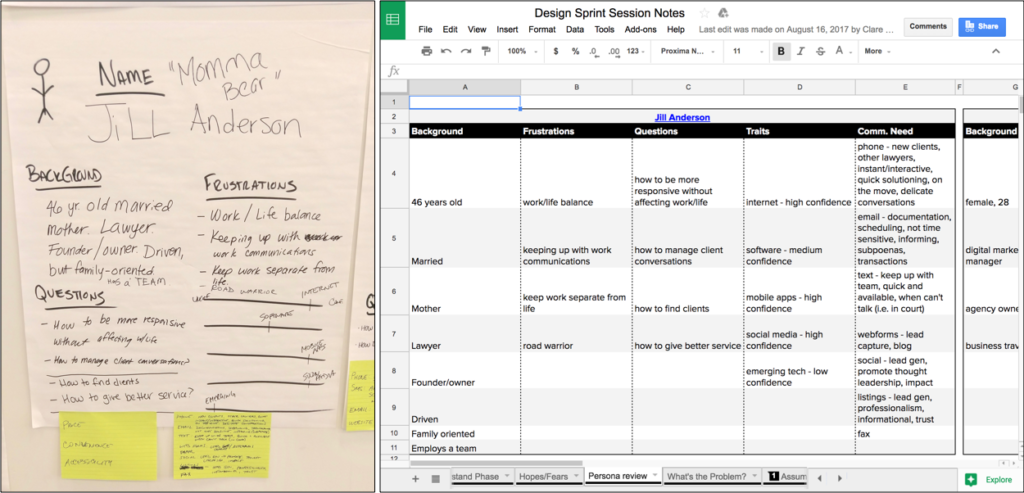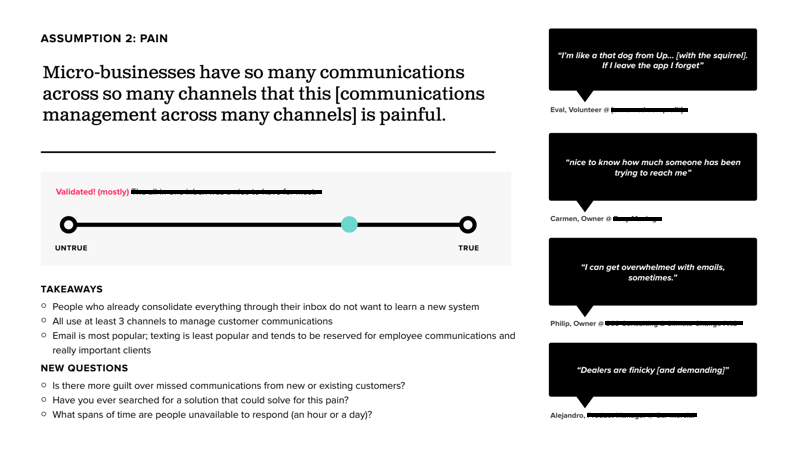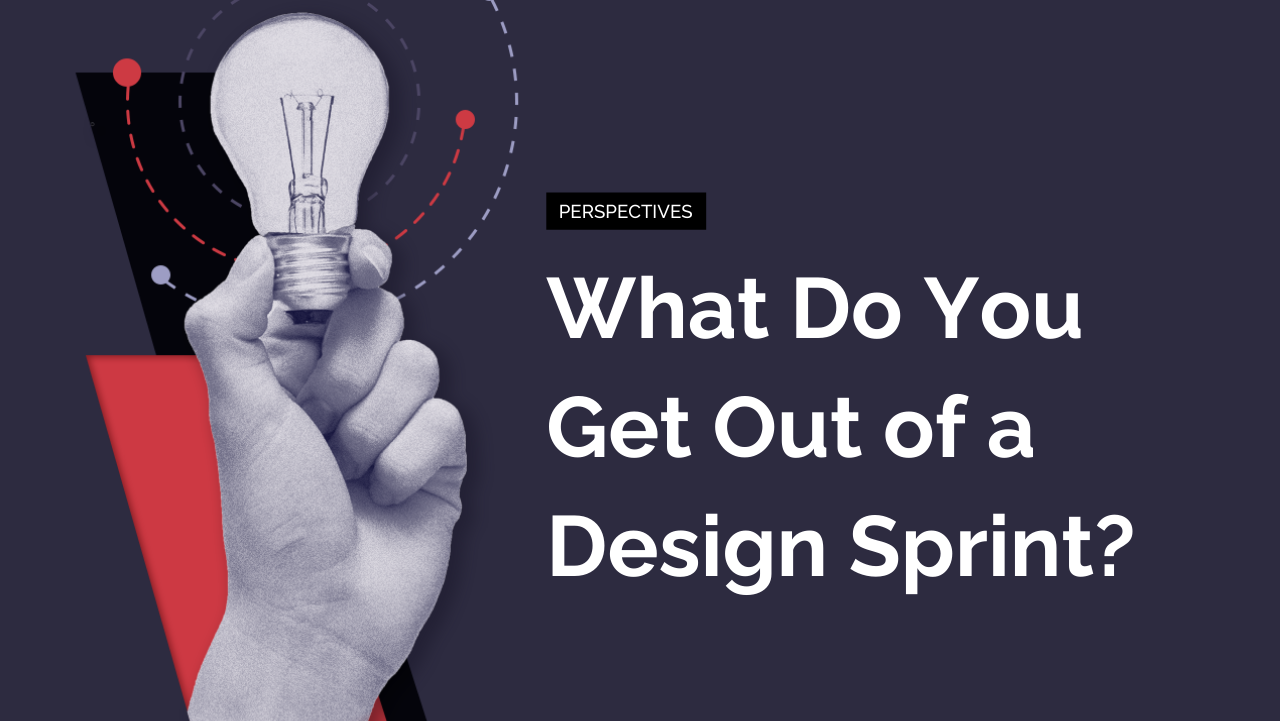We say it in our workshops, we have a dedicated slide in our pitch deck, and we tell everyone who will listen: The biggest takeaway from a Design Sprint is (in)validation of your riskiest assumptions. Often at the end of a Design Sprint we hear a participant say something to the tune of:
“We learned more this week than we have in the last two years.”
Nothing compares with the experience of getting an awesome group of people in a room for a week to strategically tackle your assumptions, brainstorm new ideas, bring one (or more) to life, and put it to the test. A Design Sprint is a fantastic tool to (re)invigorate your team and get them fired up to move quickly on a new opportunity. It’s a problem-solving framework that puts the focus on answers (outcomes) and not just assets (outputs). But make no mistake, there are still outputs.
Oh, you wanted deliverables? We’ve got those too. In addition to the answers to your biggest and most important strategic questions, you will get the following deliverables from a Design Sprint.
Prototypes
Step four of the Design Sprint process is to Prototype. These are the customer-tested prototypes of your new concept. Prototypes may include website or product concepts in Sketch or inVision or even a presentation. It depends what you’re trying to test and validate and the reactions and feedback that you collect from your customers during testing. However, we warn people not to get too attached. The shelf life of a Design Sprint prototype is intentionally very short. Sprint prototypes usually get pitched and re-invented after feedback has been collected from test subjects in step five.

Prototype Test Recordings
The entire Design Sprint builds up to the test so naturally, the interviews themselves are rich with data for you and your team to mine. That is why we make prototype test recordings for every test participant (with their permission, of course). It can be handy to re-listen to the exchange or to share with new team members trying to get up to speed on your project.
Artifact Images and Notes
If you know anything about Design Sprinting you know it involves a lot of Post-It notes. We take pictures of all the Post-It artifacts from the sprint exercises. For some organizations this is enough of a reference tool for them to take their learnings and keep running. Other teams like to take it a step further. For them we create detailed sprint notes that detail the content of every Post-It into a tidy and organized spreadsheet. That way as your team continues to work on the concept, they can perform searches and refer back to their exercise notes quickly and easily.

Sprint Capture Document(s)
Pictures, and meeting notes are great reference tools for those who were part of the Design Sprint, but what about bosses, stakeholders, and curious coworkers? The Design Sprint isn’t over at the end of Phase Five. Thoughtful communication to important internal stakeholders will ensure your hard work finds the traction it needs to either move you forward or help you make the tough decisions. Each team we work with has their own way of sharing the information about their learnings. Some teams hold a Q&A session at the end with internal stakeholders while others have kept their post-it note gallery in-tact for an additional week so that sprint participants could give tours to their colleagues. Other teams request a more formal artifact in the form of a sharable capture document. It explains the process the team went through and the takeaways and learnings from the Design Sprint.

What you don’t get…
Now that you know some of the outputs, It’s important to point out what you won’t get out of a Design Sprint.
You will not get a fully defined and validated MVP.
Design Sprints are a good start, but MVP definition requires a lot more input and iteration than what can fit into a typical five-phase sprint.
Quite often we will continue to work with sprint teams past the end of phase five. In addition to ensuring the team has everything they need for a successful handoff, the design team at Fresh Tilled Soil will take the test results and create a new and improved prototype, conduct iterative rounds of testing, and facilitate product roadmapping to give the team a strategic plan for implementation.
When we talk about what it means to have a successful Design Sprint we want participants to feel great at the end of the sprint, but we know that’s not enough. People give their hard-earned time to a process and in return need more than a feeling. They need tangible direction on how to propel their project to the next level. They need to walk away not only with the motivation to press on but with effective tools to take the next steps and to bring others with them on the journey.
Hungry for more product design tips?
Get two free chapters from of our book Design Sprint: A Practical Guidebook for Building Great Digital Products.

